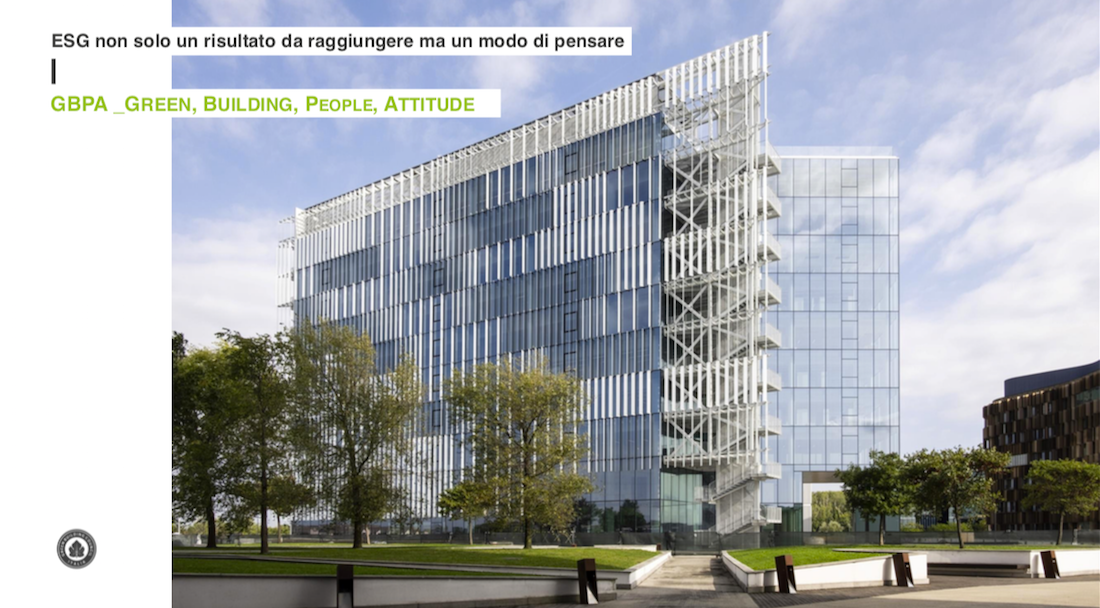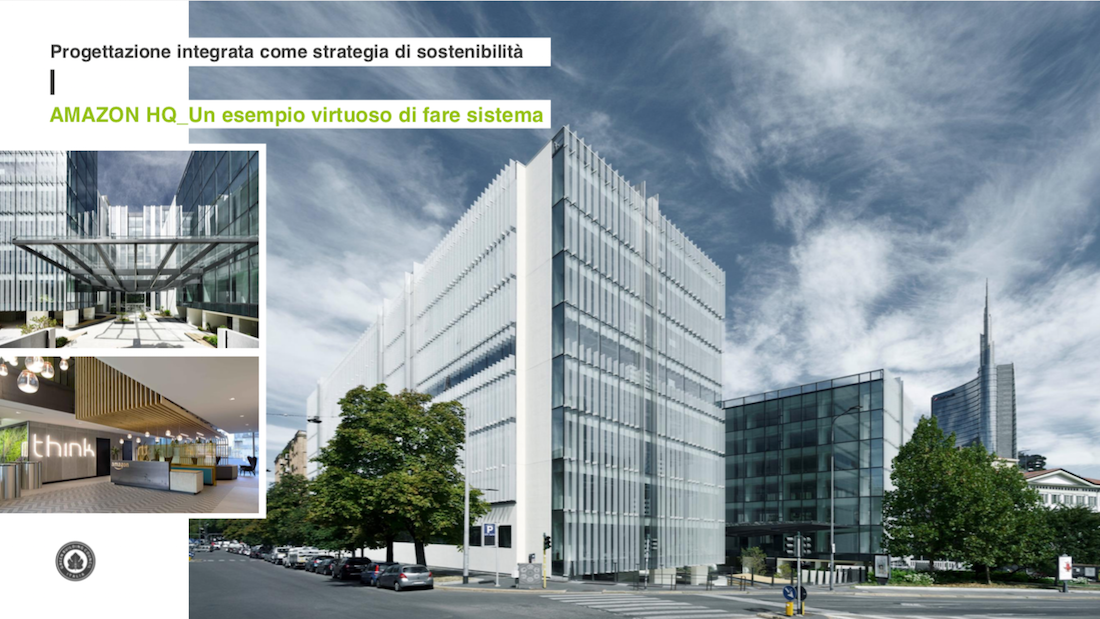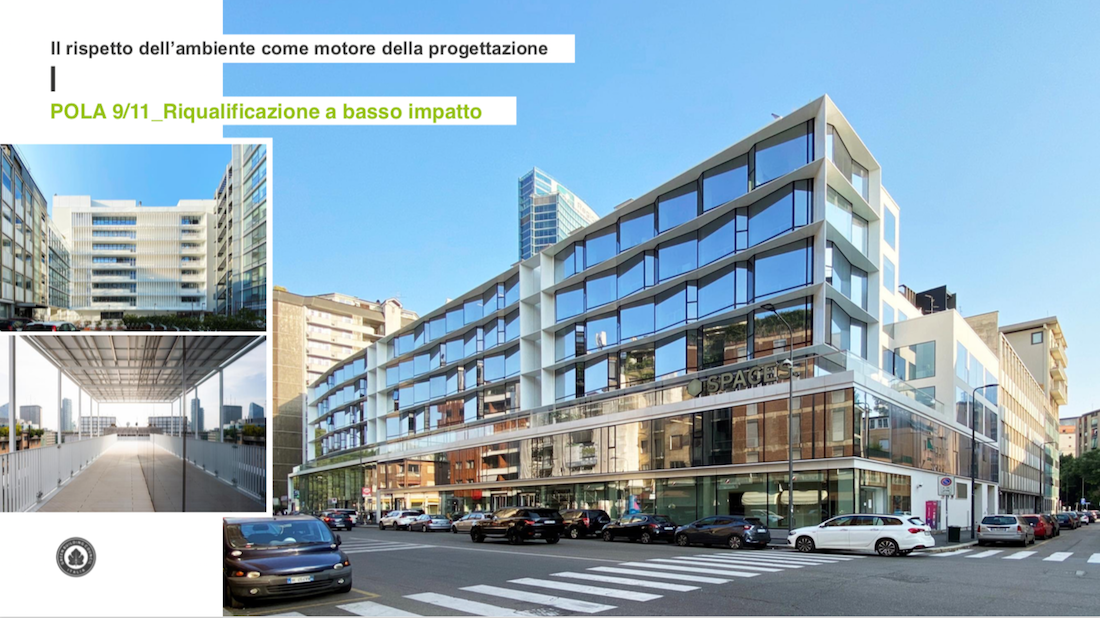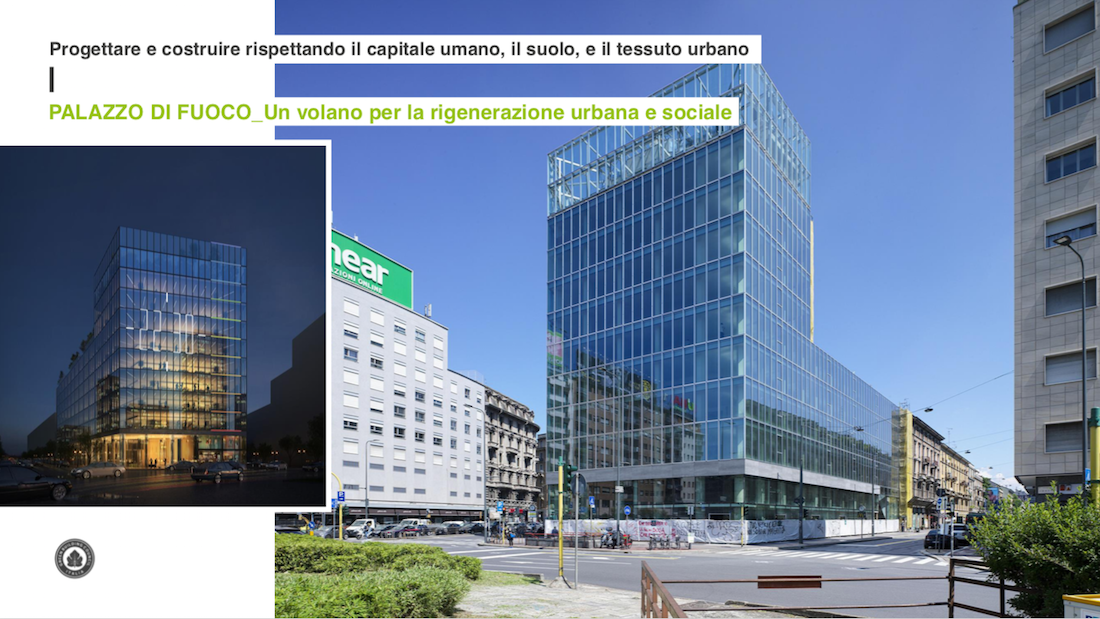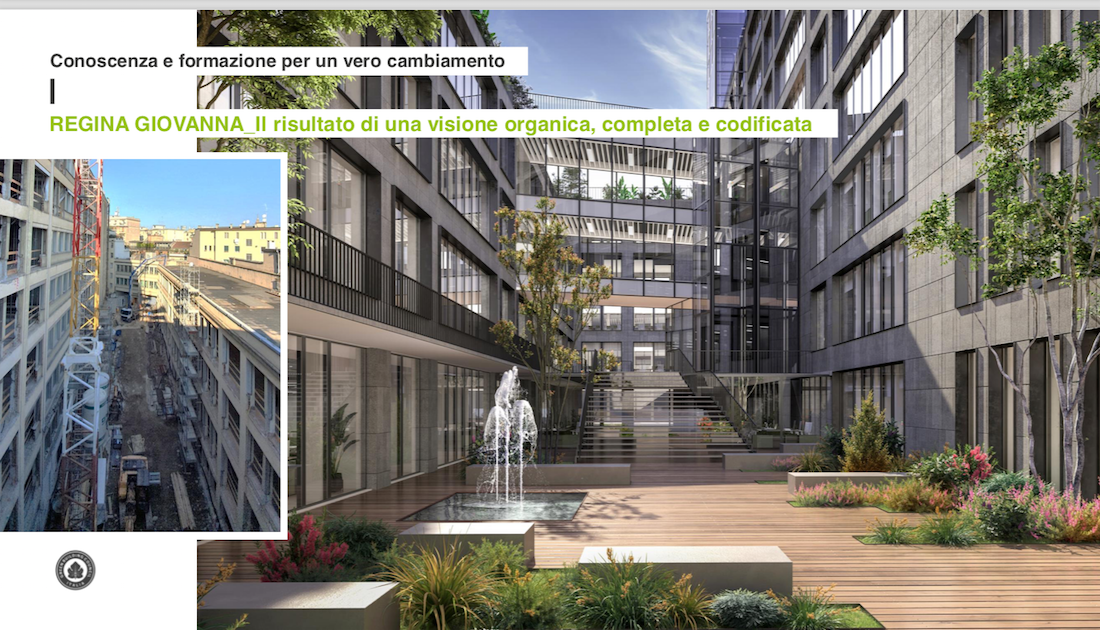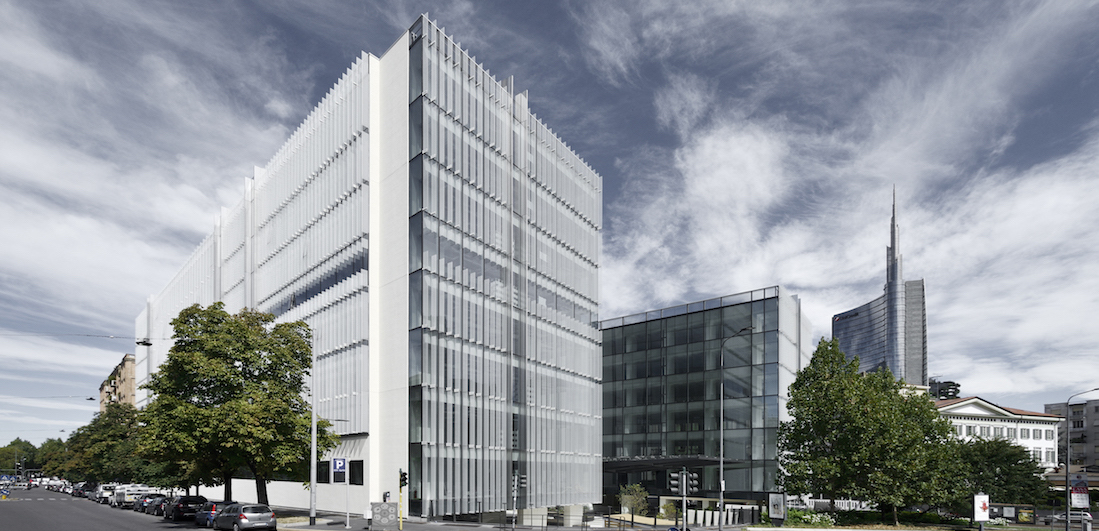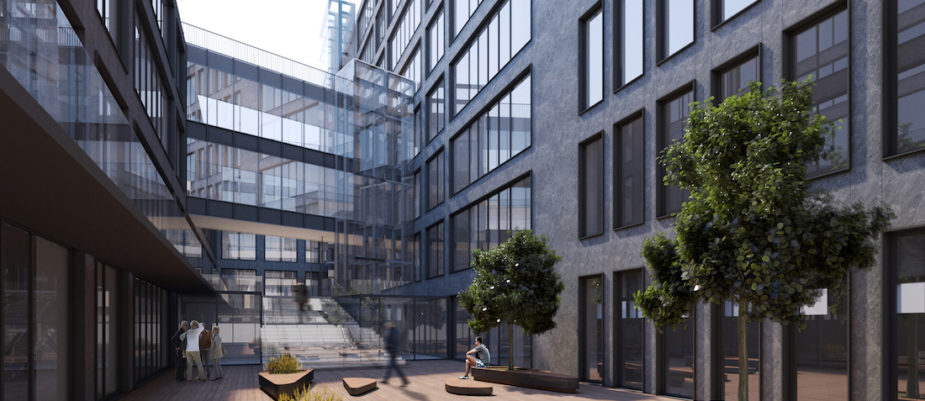
The name chosen by GBPA Architects (acronym for Green, Building, People, Attitude) is an explicit declaration of intent; this integrated design company believes in the ESG approach, in a Green Architecture in every respect: sustainable for the environment, for people, for the context, for the economy and for its long-term management.
On the occasion of the round table “Reconnect: conversations with Real Estate” organized in Milan by GBC Italia with the support of Interface and Mapei, this approach was well exposed by arch Federica De Leva, partner at GBPA Architects, through the illustration of 5 emblematic projects carried out by the studio.
1. ESG is not just a result to be achieved but a way of thinking.
Building U3: new construction in Milanofiori Nord.
ESG, Environment, Social and Governance criteria are nothing new to architectural culture. Good architecture has always been sustainable, and focused on attention to the environment, social factors, building management, people. Not only from a functional and technical point of view but also evocative and emotional.
Our acronym GBPA contains the drivers of our work, of our way of designing, of our way of thinking. We have always believed ESG sustainability is not just a result to be achieved or a way of doing, but it is a way of thinking, a way of being, a principle that must constantly guide planning and corporate strategies and decisions. We apply these criteria in all our projects, including in the redevelopment of existing buildings and interior design, as well as in new construction, such as the U3 building.
2. Integrated design as a sustainability strategy.
Amazon HQ: a virtuous example of being a system.
Building is an extremely complex process, difficult to go through alone. So it needs integrated design for the success project, not only in a technical sense. Only integrating all the specialist disciplines it is possible to ensure constant quality control, to reduce the risk and the unexpected, to achieve the client’s goals – respecting times and costs – and sustainability.
A successful example is the Amazon headquarters (LEED Platinum), the result of a very successful team work too (Antirion SGR, Tekne, Arup) in which the tenant also took part.
3. Respect for the environment as an engine of design.
POLA 9/11: low impact redevelopment.
LEED certification is the most easily measurable among the sustainability criteria and it is no longer be possible to design without a sustainability certification.
Another example is the redevelopment of the building in Via Pola, also an integrated design process, that led to the complete redevelopment of a building from the 60s / 70s , obtaining LEED certification.
In the GBC Italia 2019 report, Milan is one of the five most sustainable cities in Europe.
However, most of the buildings in Italy still unfortunately have very low energy performance.
4. Design and build respecting human capital, context and urban fabric.
Palazzo di Fuoco: a driving force for urban regeneration.
Energy performance, reduction of energy and water consumption, etc. are tangible and measurable, but there is another very important aspect in sustainability: attention to human capital, the context, the community.
The renovation of Palazzo di Fuoco in Piazzale Loreto is an example of urban and social regeneration.
The building was a driving force for this area of Milan which, thanks also to the new LOC project, leads to an overall improvement and is starting to attract investors.
5. Knowledge and training for real change.
Regina Giovanna: the result of a complete and codified vision.
The building in Viale Regina Giovanna (for Kryalos sgr) is another example of redevelopment and integrated design, and we are aiming for LEED Platinum too.
In Italy, new buildings have high standards of sustainability, but 85% of the real estate assets were built before the 1970s. And only 1% of this heritage per year is restructured.
Therefore, there is a real need sharing information to stimulating dialogue and participation.
We must make it clear that the use of a certain type of technology or material involves a greater investment in the short term, but in the long term it gives greater benefits in terms of economic and company reputation, in addition to the quality of the building, its management and the health of the people who will work there.
For this reason, knowledge, updating and professional training are essential for the transition to concrete and real sustainability.
Text by arch Federica De Leva, partner of GBPA Architects.

